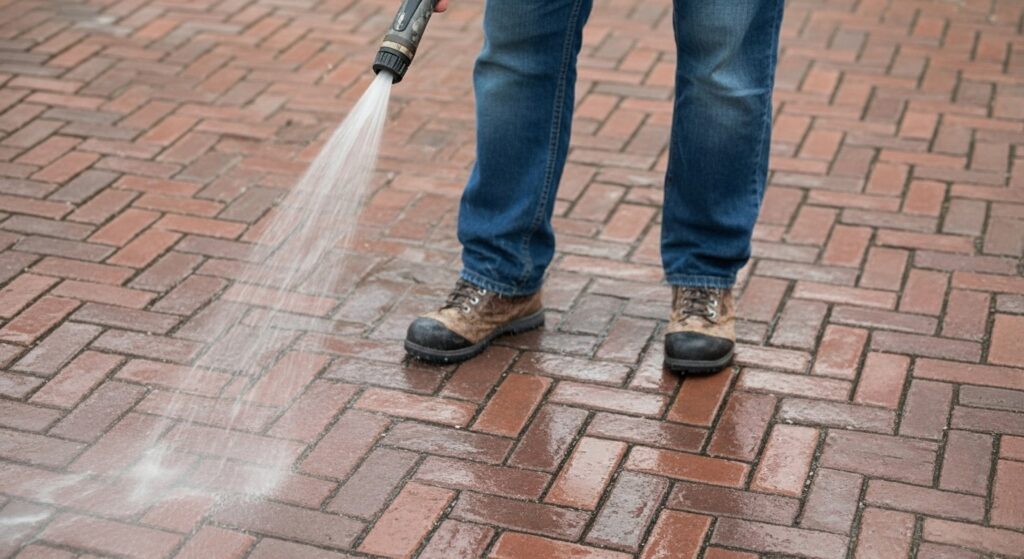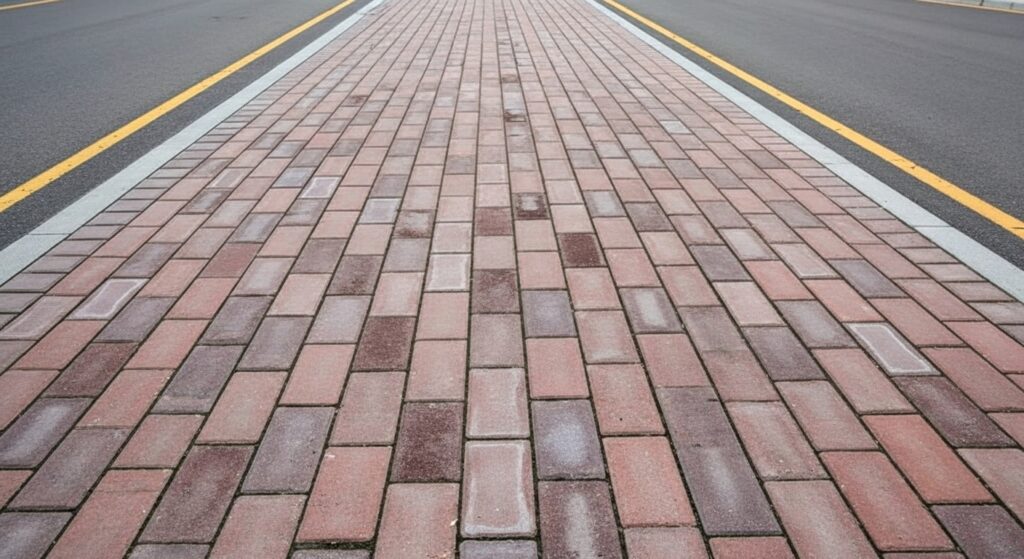Understanding Efflorescence on Paving Products
If you’ve recently installed concrete pavers or retaining wall blocks and noticed a white, powdery substance on the surface, don’t worry—you’re not alone. This common occurrence is called efflorescence, and while it may look concerning, it’s a natural and temporary process that doesn’t affect the long-term strength or durability of your paving products.
What Is Efflorescence?
Efflorescence is a white, chalky deposit that can appear on the surface of concrete, brick, or stone. It occurs when water inside the material carries soluble salts to the surface. As the water evaporates, the salts are left behind, creating the white residue.
It’s especially noticeable on darker paving products, but it can appear on any color or finish.
Why Does Efflorescence Happen?
Efflorescence is the result of a natural chemical reaction and environmental conditions. Factors include:
- Moisture movement: Rain, snow, or even ground moisture can carry salts through the concrete.
- Temperature & humidity: Damp, cool conditions make efflorescence more visible.
- New installations: Freshly placed pavers are more likely to show efflorescence as they go through the natural curing process.


Will It Damage My Pavers?
No. Efflorescence is purely cosmetic. It does not weaken or harm the structural integrity of your paving products. Over time, normal weathering, rainfall, and sunlight typically wash it away naturally.
How Can Efflorescence Be Removed?
- Natural weathering: In most cases, efflorescence disappears on its own within a season.
- Brushing & rinsing: A stiff broom and clean water can speed up the process.
- Specialized cleaners: For stubborn cases, efflorescence cleaners are available. Most are a special-order product, and customers should expect 3–7 business days for delivery. These cleaners should always be used carefully and according to manufacturer instructions.
Important Note on Sealing Pavers
Many homeowners like the idea of sealing their pavers to enhance color and add protection. However, sealing too soon can actually trap efflorescence beneath the surface.
- Wait at least 6 months to 1 year after installation before applying a sealer.
- This gives the pavers time to “breathe” and allows efflorescence to naturally work its way out. Once the efflorescence has dissipated, sealing can help protect your pavers from stains, moisture, and future buildup.
Preventing Efflorescence
While efflorescence can’t always be prevented, steps can help reduce its appearance:
- Use a well-draining base when installing pavers to limit moisture movement.
- Ensure proper sloping and grading to direct water away from paved areas.
- Seal only after the initial efflorescence cycle has passed (6–12 months).
Planes Precast Concrete – Your Local Experts
At Planes Precast Concrete Ltd., we understand that efflorescence can cause concern for homeowners and contractors, but it’s a normal part of working with concrete products. We supply only high-quality pavers and blocks from trusted manufacturers, and we’re here to answer your questions about installation, maintenance, and long-term care. If you notice efflorescence on your project, rest assured—it’s temporary, harmless, and manageable. And if you do want to speed up the process with a cleaner, we can special order efflorescence removers with delivery in 3–7 business days.
Stop by Planes Precast Concrete in Kingston or contact us today for expert advice on paving products, cleaning solutions, and maintenance support.
